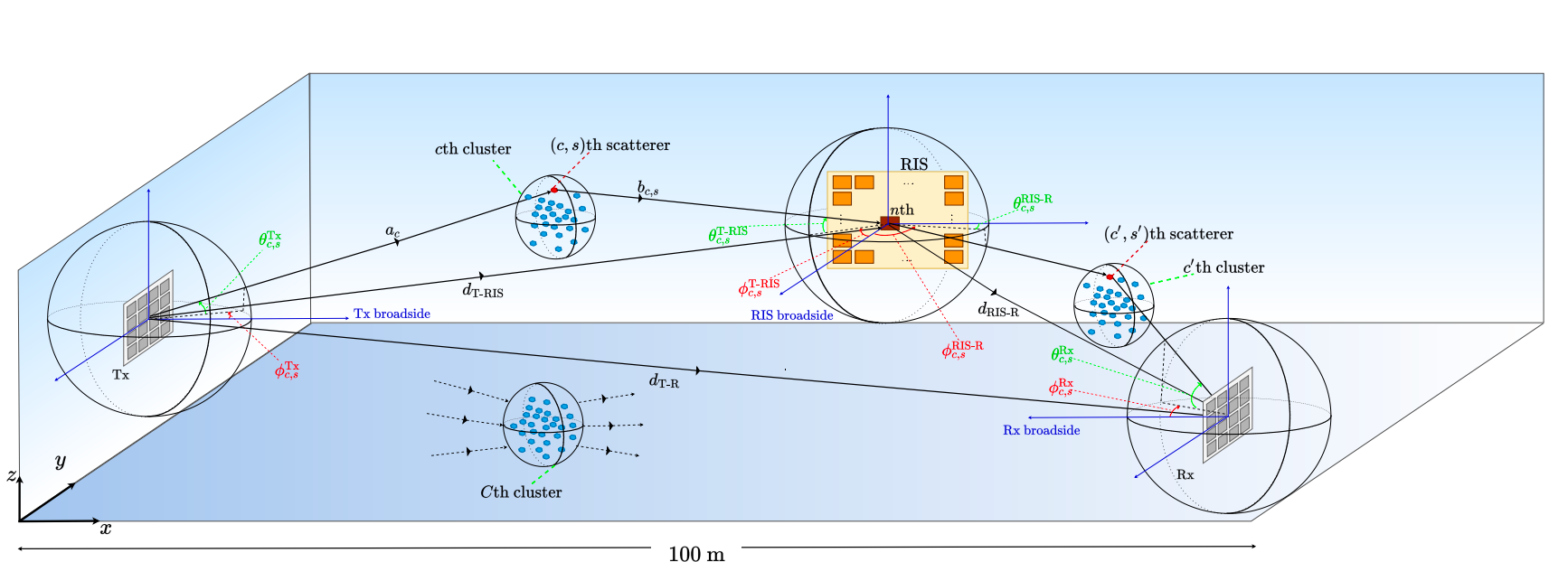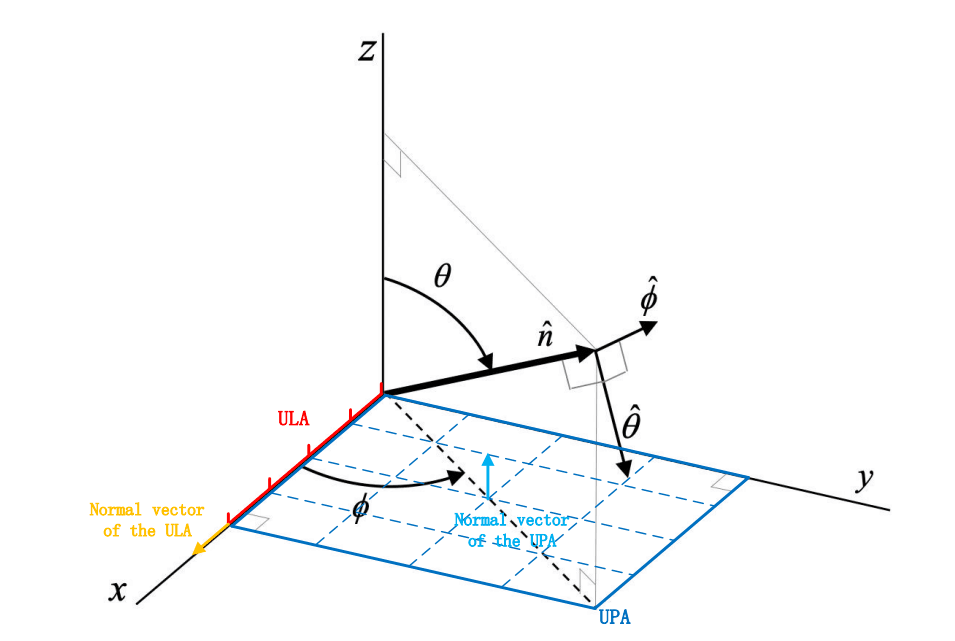This is a python project for RIS(reconfigurable intelligent surface) simulations.
- My first paper Link to my paper / Pdf to my paper:
[1] X. Guo, Y. Chen and Y. Wang, "Learning-based Robust and Secure Transmission for Reconfigurable Intelligent Surface Aided Millimeter Wave UAV Communications," in IEEE Wireless Communications Letters, doi: 10.1109/LWC.2021.3081464.
- DDPG structure
Refer to the following code on github:
$\qquad$ a. tf-agent this is the easiest way the use the official RL(reinforcement learning) api.
$\qquad$ b. open source RL api using tensorflow: (coming soon)$\qquad$ c. DDPG structure refters to [3](pdf). There has already been some works on the combination of the DDPG and the RIS [4](pdf)
- RIS simulation Refer to the paper Link to this paper / Pdf to this paper. This paper provide a simulation code in matlab, we refer to this project to provide a python version.
[2] E. Basar and I. Yildirim, "SimRIS Channel Simulator for Reconfigurable Intelligent Surface-Empowered Communication Systems," 2020 IEEE Latin-American Conference on Communications (LATINCOM), 2020, pp. 1-6, doi: 10.1109/LATINCOM50620.2020.9282349.
This project aims to redo the simulations shown in the paper below Link to this paper:
[3] Zhang, Zijian, et al. "Active RIS vs. Passive RIS: Which Will Prevail in 6G?." arXiv preprint arXiv:2103.15154 (2021).
Specifically, in this project we will simulate the active RIS. And to maximum the universality, this project will provide modular simulation tool for RIS-aided system.
The cited paper for this project
The code to initialize the agents
this section mainly refers to [2] (SimRIS1.0) and [2.2] (SimRIS2.0).
According to the plate scattering theory[2,(1)], the transmitted signal is captured by each RIS element, then rescattered to the medium in all directions. Focusing on he
The captured power at the receiver (Rx) is obtained as
where
where
Let's assum the parameters as:
| Parameter |
|---|
| $ G_{e}=\pi\ (5\ \mathrm{dBi})$ (Reference)[2-9] |
Then the received power through
| Parameter | Meanings | Dimension |
|---|---|---|
| transmiter antennas number | ||
| receiver antennas number | ||
| End-to-end channel matrix | ||
| Direct channel matrix | ||
| The matrix of channel coefficients between the Tx and the RIS | ||
| The matrix of channel coefficients between the Tx and the RIS | ||
| The response of the RIS array |
$$ R=\log {2} \operatorname{det}\left(\mathbf{I}{N_{r}}+\frac{P_{t}}{\sigma^{2}} \mathbf{C}^{H} \mathbf{C}\right) \mathrm{bit} / \mathrm{sec} / \mathrm{Hz} $$
The detailed channel modeling can be seen in 3GPP 38.901 [5].
The basic idea to model the mmWave channel is to consider the channel under SISO senirio and then by multiplexing the array response, we can get the result of a mmWave channel under MIMO senirio.
The detailed SISO channel model can be found in [6]
the defination of the AoA and AoD is shown below:
coding platform: Win10 pro, anaconda3
nvidia driver: 466.47
cuda version: cuda_11.1.1_456.81_win10
cuddn version: cudnn-11.2-windows-x64-v8.1.1.33
tensorflow version: 2.4.0
python version: 3.8.10
[1](pdf) X. Guo, Y. Chen and Y. Wang, "Learning-based Robust and Secure Transmission for Reconfigurable Intelligent Surface Aided Millimeter Wave UAV Communications," in IEEE Wireless Communications Letters, doi: 10.1109/LWC.2021.3081464.
[2.0] E. Basar and I. Yildirim, "SimRIS Channel Simulator for Reconfigurable Intelligent Surface-Empowered Communication Systems," 2020 IEEE Latin-American Conference on Communications (LATINCOM), 2020, pp. 1-6, doi: 10.1109/LATINCOM50620.2020.9282349. note this and [2.1] is corresponding to the SimRIS1.0 which considers the SISO system
[2.1] E. Basar, I. Yildirim, “Indoor and Outdoor Physical Channel Modeling and Efficient Positioning for Reconfigurable Intelligent Surfaces in mmWave Bands“, ArXiv:2006.02240, May 2020
[2.2] E. Basar, I. Yildirim, “SimRIS Channel Simulator for Reconfigurable Intelligent Surfaces in Future Wireless Networks”, ArXiv:2008.01448, Aug. 2020.this is corresponding to the SimRIS2.0 which considers the MIMO system
[3](pdf) Lillicrap, Timothy P., et al. "Continuous control with deep reinforcement learning." arXiv preprint arXiv:1509.02971 (2015).
[4](pdf) Wang, Liang, et al. "Joint trajectory and passive beamforming design for intelligent reflecting surface-aided UAV communications: A deep reinforcement learning approach." arXiv preprint arXiv:2007.08380 (2020).
[5] 3GPP, “Study on channel model for frequencies from 0.5 to 100 GHz,” 3rd Generation Partnership Project (3GPP), Technical Specification (TS) 38.901, 01 2020, version 16.1.0. [6] E. Basar and I. Yildirim, “Indoor and outdoor physical channel modeling and efficient positioning for reconfigurable intelligent surfaces in mmWave bands,” Aug. 2020. [Online]. Available: https://arxiv.org/abs/2006.02240

